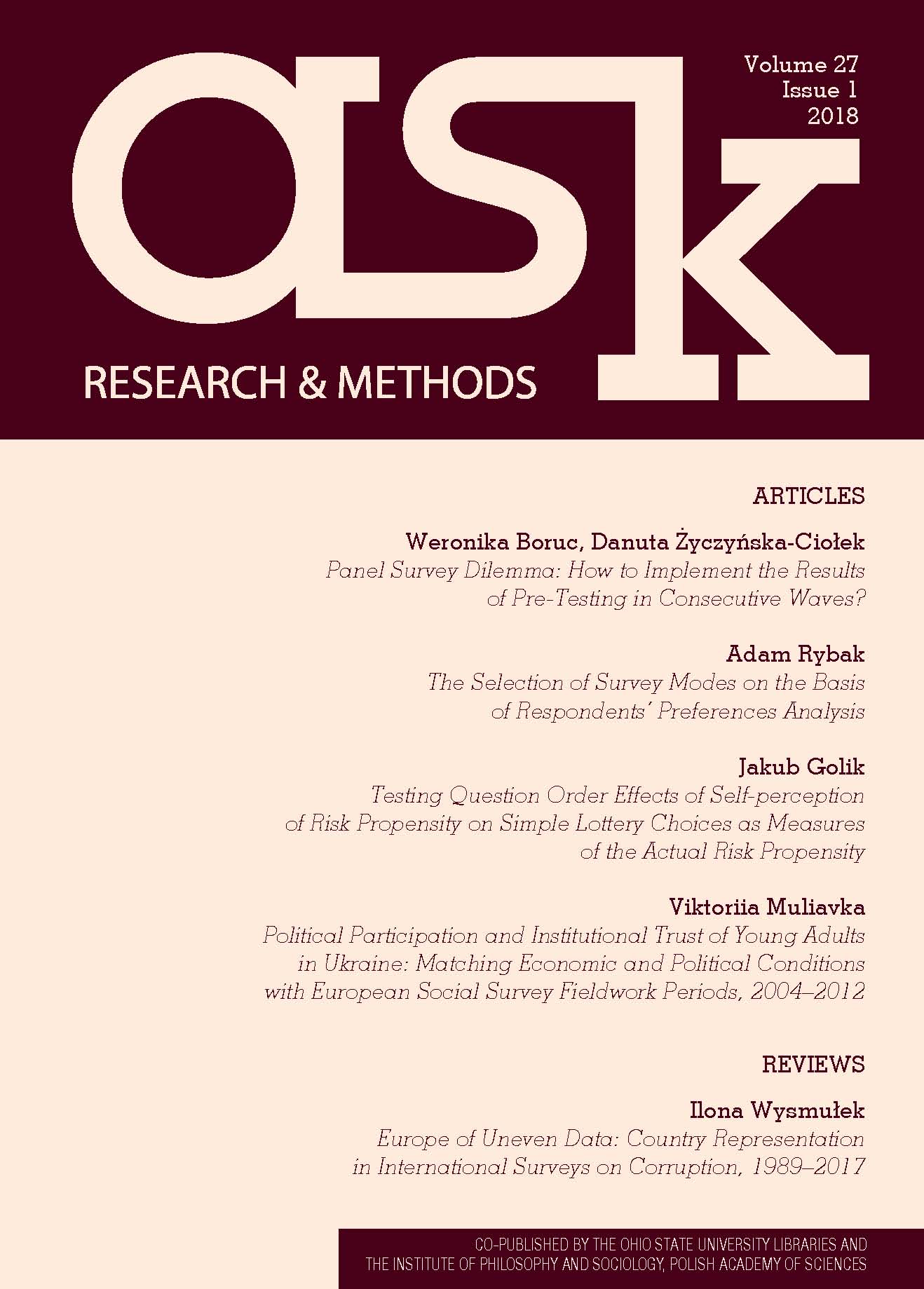Testing Question Order Effects of Self-perception of Risk Propensity on Simple Lottery Choices as Measures of the Actual Risk Propensity
Testing Question Order Effects of Self-perception of Risk Propensity on Simple Lottery Choices as Measures of the Actual Risk Propensity
Author(s): Jakub GolikSubject(s): Politics, Sociology
Published by: Instytut Filozofii i Socjologii Polskiej Akademii Nauk
Keywords: order effects; questions order; risk propensity; risk perception; simple lottery
Summary/Abstract: Uncertainty together with the necessity of making choices inevitably results in risky decisions. For many years now, scientists have been studying notions connected with risk such as risk management, risk perception or risk propensity. While many sophisticated methods regarding measurement of risk propensity have been developed so far, it seems that little attention has been paid to checking whether they are not inherently flawed. The main goal of this article is to check with a simple preliminary study whether questionnaire based methods of risk propensity assessment are not susceptible to question order effects. The research is focused on respondents’ answers to simple lottery choices as measures of their risk propensity. However, what would happen if the respondents were fi rst asked how they perceive their own risk propensity? In order to answer this query a few questions designed to measure risk propensity and self-perception of risk propensity have been interspersed in a questionnaire of another research project. Furthermore, as an additional output of the study, the correlation has been checked between self-perception of risk propensity and the actual assessment of risk propensity based on the questions used. The results of the study show that question order effects are partially present in the setting described. Some conclusions and recommendations for further research are made based on the results. Finally, it can be concluded from the research that simple self-perception of risk propensity was significantly correlated with measures of actual risk propensity used.
Journal: ASK. Research & Methods
- Issue Year: 2018
- Issue No: 27
- Page Range: 41-59
- Page Count: 20
- Language: English

